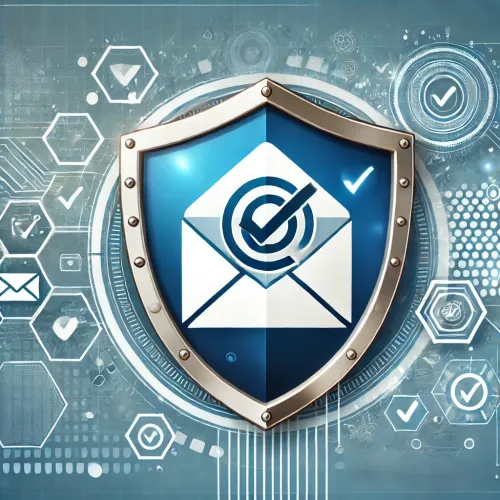
Knowledge base
December 15, 2024
How DMARC authentication protects your organization from email fraud
Email is an essential communication tool, but also a favorite entry point for cybercriminals. Think phishing attacks or spoofing in which malicious actors impersonate someone within your organization. Fortunately, there is a powerful solution: DMARC authentication. But what exactly is DomainKeys Identified Mail , and why is its enforcement so important? In this blog, we’ll take you through the world of DMARC and how it can protect your organization.
What is DMARC? 📧
DMARC (Domain-based Message Authentication, Reporting & Conformance) is a standard that helps secure e-mail. It combines two main techniques:
- SPF (Sender Policy Framework): Controls whether a sending server is authorized to send emails on behalf of a domain.
- DKIM (DomainKeys Identified Mail): Ensures that emails cannot be manipulated.
Together, SPF and DKIM ensure that only legitimate emails are sent on behalf of your domain. DomainKeys Identified Mail adds an extra layer by:
- To verify that emails really come from your domain.
- Generate abuse reports.
- Block malicious emails.
Why is DMARC enforcement so important? 🔒
Many organizations implement DomainKeys Identified Mail but get stuck in a “monitoring” phase. That means DMARC only monitors and reports, but takes no action against fraudulent emails. By moving to enforcement (e.g., ‘quarantine’ or ‘reject’), unauthorized e-mails are actively blocked.
Benefits of DMARC enforcement:
✅ Protection against phishing and spoofing: You prevent malicious people from using your domain for attacks. ✅ Improved email deliverability: Only legitimate emails reach inboxes, increasing trust in your domain. ✅ Insight into email traffic: DMARC reports give you insight into who is trying to send emails on behalf of your domain.
How do you implement DMARC enforcement? 🛠️
Implementing DMARC requires a planned approach. Here are the key steps:
- Start monitoring:
Set up a DMARC record on your DNS with the ‘none’ policy. This way you collect reports on email traffic without directly blocking emails. - Analyze your reports:
Understand who is sending emails on behalf of your domain and identify legitimate sources. - Switch to “quarantine”:
Once you are sure that legitimate sources are configured correctly, you can quarantine fraudulent emails. - Go to ‘reject’:
The final step is to completely block unauthorized emails. This is the most effective way to stop e-mail fraud.
DMARC enforcement: more than just technology 🌐
DMARC is not only a technical measure, but also a means of building trust. By showing that your organization takes email security seriously, you strengthen your reputation with customers, partners and employees. Fun fact: According to research, only 15% of domains worldwide are fully protected by DMARC enforcement. This means there is still a huge opportunity to improve your security. 💡
Conclusion ✨
DMARC enforcement is an essential step in securing email and preventing cyber attacks. Moving from monitoring to active enforcement not only protects your organization, but also builds trust and reputation. 🔑 Tip: Start auditing your current email configuration today and take steps toward DMARC enforcement!
Heb je hulp nodig bij het implementeren van DMARC? Laat het weten, en wij helpen je graag op weg. 😊
About the author
My name is Alta Martes, a specialist in Microsoft 365 and Google Workspace, with a focus on modern workplace management, cloud security and identity & access management. With years of experience, I help organizations optimize their IT infrastructure and create a secure, efficient digital workplace. 🎯 Need help with your Microsoft 365 strategy?
Click below and find out how we can support your organization:
Want to know more?

Related
blogs
Tech Updates: Microsoft 365, Azure, Cybersecurity & AI – Wekelijks in je Mailbox.



